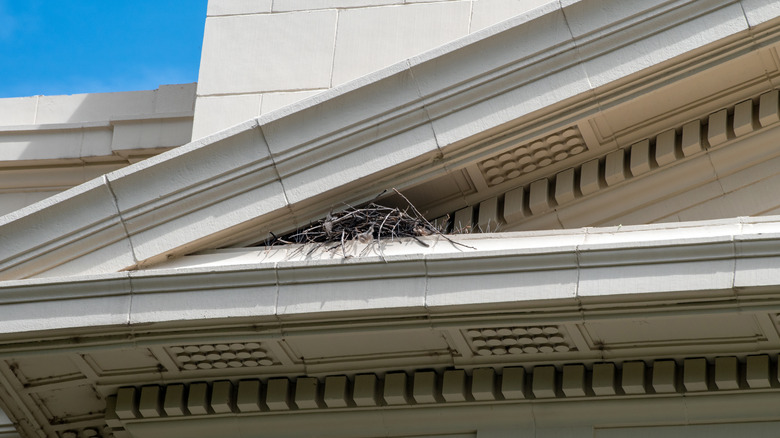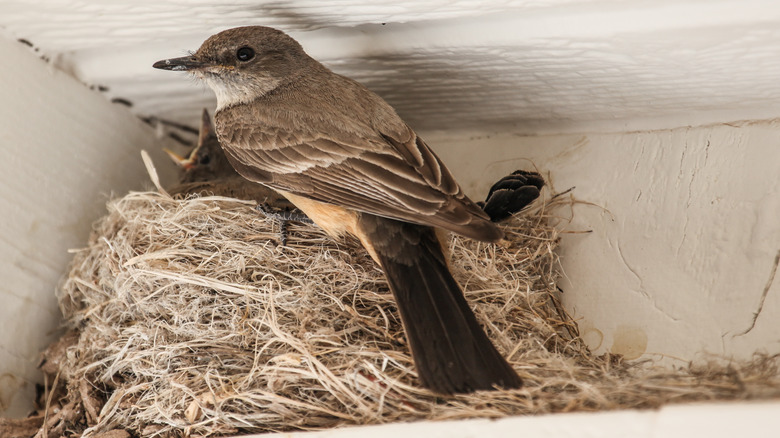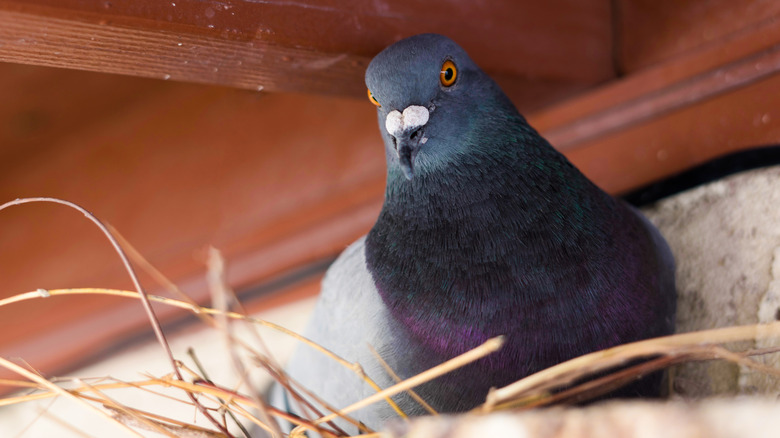How You Can Stop Birds From Nesting In The Eaves Of Your Home
Watching birds showing motherly love to nestlings, waking up to their sweet melodies, or even gazing at them as they decorate the sky with alluring colors is something many homeowners all over the world can appreciate. But all that turns ugly when they build nests on your roof eaves. The nests can easily block vital drainage channels, and their droppings can leave blemishes on your beautiful roofing or even corrode your shingles. Luckily, you don't have to tolerate that headache. You can prevent birds from building nests by employing sound repellers, spikes, scarecrows, filling spaces, or netting, among other ways.
However, the best method will depend on your budget, the nature of the infestation, and the type of birds you're dealing with. For example, filling in spaces may not be practical for woodpeckers because they'll still drill holes to find a perfect nesting opportunity. As such, you may need to use other effective methods like nets or sound repellers. Understanding how these distinct methods work will help you choose the best option for your home.
Sound repellers and spikes
Sound is an excellent method to keep birds away, with audio devices delivering the right frequency to deter them from your home. When it comes to sound repellers, you have two options: sonic and ultrasonic. Sonic models produce and transmit predatory sounds to deter birds from nesting on eaves. One of the best features of these is that they can broadcast over a wide area, which is great for large properties. On the other hand, ultrasonic models are a more common means of keeping these feathered creatures away. They produce a high-frequency sound, usually about 20,000 hertz or above, which birds find irritating but humans are unable to hear at all.
Spikes are also a flexible deterrent. Their unique design makes them easy to fix on straight or curved surfaces. Spikes incorporate metal or plastic projections that discourage birds from forming nests without causing harm. These barriers work against many species, such as seagulls, pigeons, and crows. Spikes are widely used because they are durable and straightforward to install. The other benefit of using them is that they aren't likely to negatively affect the aesthetics of your home due to their low-profile design.
Scarecrows, nets, and scented spray
Installing scarecrows that resemble owls or hawks on your home's eaves is a great way to trick birds into thinking predators already live on your roof. Some even include light-reflecting eyes and moving wings, among other features that imitate real creatures that birds won't want to mess with. Another humane way of dealing with bird nests is spraying your eaves with peppermint or lemon essential oil. While you may be comfortable with these scents, birds often can't stand them, so they will find another house to build their nest. If all that doesn't work, consider using mesh bird netting, which restricts birds from accessing your roof eaves in the first place.
Birds may be cute, but they can wreak havoc on your home. For example, their droppings contain uric acid, which can eat away at structures or damage paint. An accumulation of bird droppings can also be a health risk since they are a source of numerous transmissible diseases, including candidiasis, salmonellosis, and histoplasmosis. Remember, damaged eaves usually require costly repairs. It's best to take action before it's too late.


